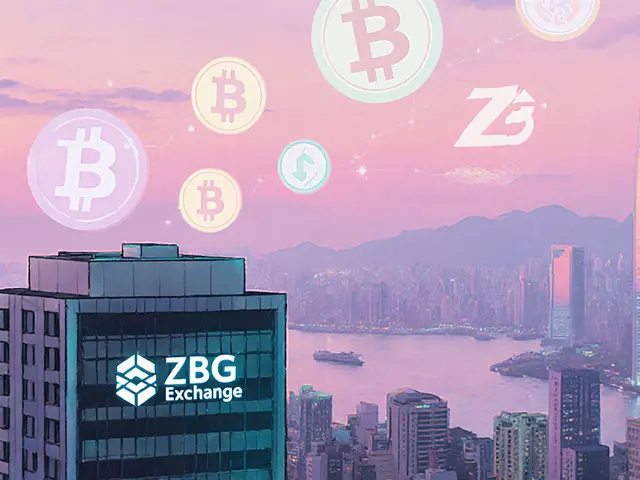ZBG Exchange Review: Deep Dive into Risks, Fees, and Trustworthiness

When you hear the name ZBG Exchange is a Hong‑Kong‑based platform launched in July 2018 as a subsidiary of ZB.com. It markets itself as a playground for newer tokens, promising low‑cost trading and a fast‑track to its parent exchange. This ZBG exchange review pulls together data from regulators, independent analysts, and real‑user feedback to let you decide whether the hype matches reality.
Key Takeaways
- ZBG’s self‑reported volume is untracked by CoinMarketCap, raising strong doubts about its legitimacy.
- Fee schedules are opaque; users frequently encounter hidden withdrawal and maker/taker charges.
- Security claims (2FA, cold storage) lack third‑party audit evidence, unlike exchanges such as Kraken that publish proof‑of‑reserves.
- The platform operates without a HongKong SFC licence, exposing traders to regulatory risk.
- Compared with major rivals like Binance and Coinbase, ZBG falls short on transparency, volume verification, and user support.
1. History and Ownership
ZBG was created by the team behind ZB.com, a well‑known exchange that started in 2017. The parent calls ZBG “its baby brother,” allowing projects that can’t meet ZB.com’s stricter listing standards to launch on ZBG first. In practice, tokens that earn enough liquidity on ZBG may be promoted to ZB.com, while under‑performing assets can be “degraded” back to ZBG.
The sister exchange ZBX, registered in Malta, shares liquidity pools with ZBG. This cross‑border arrangement adds a layer of regulatory ambiguity, as Malta’s licensing regime differs from HongKong’s nascent framework.
2. Volume Claims vs. Verified Data
Back in February2019, ZBG reported a 24‑hour volume of $450million, ranking it among the top ten exchanges on CoinMarketCap. By December2021 the platform announced a staggering $8.8billion daily turnover, about 29% of Binance’s $30billion on the same day.
However, CoinMarketCap now lists ZBG as an “Untracked Listing,” meaning the aggregator cannot verify any of those numbers. Independent analysis from Chainalysis shows that untracked exchanges account for only 0.3% of global volume in 2025, a steep decline from 2.7% in 2023. The discrepancy suggests that ZBG’s historic figures were likely inflated through wash‑trading.
3. Fee Structure and Hidden Costs
Unlike Coinbase, which openly publishes maker/taker fees ranging from 0.05% to 0.60% (based on monthly volume), ZBG’s website offers no clear fee schedule. Reviews from Traders Union in May2025 repeatedly mention surprise withdrawal fees and “processing” charges that appear only after the trade is executed.
One user on CryptoSlate reported a 0.3% hidden fee on a $10,000 BTC purchase that reduced the net amount by $30, an amount not reflected in the order confirmation screen.
4. Security Measures and Audits
ZBG claims to use two‑factor authentication and cold‑storage wallets, standard safeguards for most exchanges. Yet the platform has never released an independent security audit or a proof‑of‑reserves report. In contrast, Kraken publishes quarterly audits verified by accounting firm Marcum LLP.
The lack of third‑party verification, coupled with a growing number of scam domains imitating ZBG (e.g., zbgmax.com, zbgopt.com), increases phishing risks. Users have reported receiving phishing emails that mimic ZBG’s branding, prompting them to reveal login credentials.
5. Regulatory Landscape
HongKong’s Securities and Futures Commission (SFC) introduced a licensing regime for virtual‑asset trading platforms in March2023. There is no public record of ZBG obtaining an SFC licence. The Financial Conduct Authority (FCA) in the UK warned in July2025 that platforms with opaque operations, like ZBG, pose “high‑risk” to investors.
Without a license, ZBG operates in a legal gray area. Investors could face enforcement actions, and any dispute may lack jurisdictional recourse.
6. Core Services Offered
Beyond basic spot trading, ZBG provides:
- OTC desk for large‑volume trades.
- Launchpad for token sales, targeting early‑stage projects.
- Rocket services that promise acceleration and marketing for new tokens.
- Mobile apps for iOS and Android-though recent user reviews note frequent crashes and delayed updates.
While these features sound attractive, none compensate for the platform’s transparency gaps.
7. Comparison with Leading Exchanges
| Metric | ZBG Exchange | Binance | Coinbase |
|---|---|---|---|
| Founded | 2018 | 2017 | 2012 |
| Regulatory License (HK) | No public license | None (operates globally) | Licensed by SFC (2021) |
| Verified 24‑hr Volume (2025) | Untracked / unreliable | $30billion | $1.5billion |
| Trading Fees (maker/taker) | Undisclosed, hidden fees reported | 0.1%-0.02% | 0.05%-0.60% (tiered) |
| Security Audits | None publicly available | Periodic third‑party audits | Quarterly proof‑of‑reserves |
| User Support Rating (2025) | 3.7/5 (3 reviews) | 4.6/5 (large sample) | 4.4/5 (wide sample) |

8. Real‑World User Experience
Feedback on platforms that aggregate user reviews-such as CryptoGeeks and CryptoSlate-shows a recurring theme: withdrawal delays and unresponsive customer service. One trader recounted a 17‑day wait for a 2.5BTC withdrawal, receiving only a generic “system maintenance” email.
Support channels are limited to email and a basic ticketing system; live chat is absent. The small number of public reviews (often just three to five) suggests that either the user base is tiny or negative experiences are being suppressed.
9. Red Flags Summary
- Unverified trading volume claims (CoinMarketCap untracked status).
- Opaque fee structure with hidden charges.
- No publicly available security audits or proof‑of‑reserves.
- Lack of SFC licensing in HongKong.
- Multiple scam domains impersonating the brand.
10. Should You Trade on ZBG?
If you’re chasing the newest altcoins and can tolerate high risk, ZBG might give you early access. However, the combination of questionable volume reporting, hidden fees, regulatory uncertainty, and weak user support makes it a high‑risk choice. For most traders, especially those protecting sizable capital, established exchanges like Binance or Coinbase provide better transparency, audited security, and clear fee structures.
Frequently Asked Questions
Is ZBG Exchange licensed in HongKong?
No public record shows ZBG holding a license from the HongKong Securities and Futures Commission. Operating without a license places users at regulatory risk.
How reliable are ZBG’s reported trading volumes?
CoinMarketCap marks ZBG as an “Untracked Listing,” meaning its volume figures cannot be independently verified. Independent studies suggest many of the reported numbers are inflated.
What fees does ZBG charge for spot trades?
ZBG does not publish a clear maker/taker schedule. Users have reported hidden withdrawal fees and occasional “processing” surcharges that are only revealed after a trade is completed.
Are my funds safe on ZBG?
The exchange claims to use 2FA and cold storage, but it has no third‑party security audit or proof‑of‑reserves. Compared with audited platforms, the safety of funds on ZBG is uncertain.
How does ZBG’s customer support compare to larger exchanges?
Support is limited to email tickets, with reports of delayed or generic responses. Larger exchanges typically offer 24/7 live chat and faster resolution times.







One thing to keep in mind is that operating without a Hong‑Kong SFC licence puts any trader at a regulatory blind spot. Even if the platform touts 2FA and cold storage, those safeguards mean little without external verification. It’s also worth checking if the exchange’s wallet addresses ever appear in known phishing reports – a quick search can save a lot of hassle. I’ve seen a few peers mention delayed withdrawals that turned out to be simple maintenance notices, but the pattern was worrying. Ultimately, weighing the excitement of new tokens against the lack of clear oversight is a personal call.
Totally get the concerns, but hey, sometimes taking a calculated risk can pay off big – just make sure you set a strict loss limit. I’d say start with a tiny amount, maybe $50, and see how the withdrawal process feels. Also, keep an eye on their Twitter for any sudden policy updates, they usually post them there first. Stay chill and happy trading!
Honestly the hype around ZBG feels like a classic pump‑and‑dump scenario, especially with those untracked volume claims 😒 the lack of PoR is a red flag, but you know the market loves drama, so they’ll keep pushing tokens under the radar. Without a transparent fee model you’re just guessing your slippage and hidden costs, which is basically a blind‑side arbitrage risk. The whole “fast‑track to parent exchange” narrative is just a marketing funnel, not a real value add.
We can’t let every flashy platform dictate the standards for crypto safety. 🇺🇸 Our own regulators are working hard to protect investors, unlike some overseas services that cut corners. If you care about your hard‑earned money, stick with exchanges that are transparent and audited. 💪
When evaluating any exchange, the first pillar you should examine is regulatory compliance, because it dictates the legal recourse you have in case of disputes. ZBG’s absence from the Hong‑Kong SFC registry means there is no formal oversight, which raises a red flag for institutional investors. Second, look at proof‑of‑reserves; reputable platforms publish periodic audits that match on‑chain balances, and the lack of such evidence for ZBG should make you wary. Third, consider the fee transparency – hidden withdrawal fees erode net returns and can be difficult to calculate without detailed statements. Fourth, assess the security infrastructure: while 2FA and cold storage are baseline expectations, independent security audits are the gold standard for confirming robustness. Fifth, liquidity depth matters; inflated volume numbers often stem from wash‑trading, which can distort price discovery and lead to unexpected slippage. Sixth, examine the user support ecosystem – responsive ticketing, live chat, and clear escalation paths are essential for timely issue resolution. Seventh, review community feedback across multiple platforms; a pattern of delayed withdrawals or generic “maintenance” emails is a systemic warning sign. Eighth, verify the exchange’s corporate structure and ownership; if it’s tied to another platform with a mixed reputation, that risk can cascade. Ninth, be aware of phishing vectors – multiple mimic domains indicate a higher threat level for credential theft. Tenth, test the platform with a small transaction before committing larger capital; this real‑world trial can reveal hidden costs or performance bugs. Eleventh, keep an eye on regulatory news, especially in jurisdictions where the exchange claims to operate, because sudden enforcement actions can freeze assets. Twelfth, diversify your holdings across multiple exchanges to mitigate the impact of any single point of failure. Thirteenth, use hardware wallets for long‑term storage rather than leaving large balances on any exchange. Fourteenth, maintain thorough records of all trades and fees for tax compliance. Finally, always balance the potential upside of early token access against the cumulative risk profile you’ve just dissected 😊
All that “expert” talk just masks the fact that ZBG is a circus without a safety net.
Hey folks, remember that every platform has its pros and cons, and the best move is to stay informed and keep your expectations realistic. If you decide to dip a toe in, set clear boundaries for how much you’re willing to risk, and don’t let the hype drive you into a frenzy.
Yea, because “staying realistic” always works out great when you’re stuck waiting 2 weeks for a 2.5BTC withdrawal lol.
It’s easy to feel overwhelmed by all the red flags, but you can turn this into a learning opportunity. Start by creating a checklist of must‑have exchange features – licensing, audit reports, transparent fees – and cross‑reference each platform you consider. This systematic approach will give you confidence and keep emotions in check.
Picture this: a trader armed with a bright, rainbow‑colored checklist, marching through the crypto jungle, spotting shady vines like “unverified volume” and cutting them away with a machete of due diligence. That vivid image might sound playful, but it captures the essence of staying vigilant while still enjoying the adventure.
Regulatory compliance should be a non‑negotiable requirement for any exchange.
Oh, absolutely! It’s like trying to build a house on sand – you might get a quick start, but the moment the tide comes in, everything crumbles. That’s why I always steer clear of platforms that skip the licensing homework.
😂😂 Dude, you’re totally right – but have you actually *read* the fine print on ZBG’s terms? It’s hidden in a tiny font at the bottom, like a secret trap! 🚨